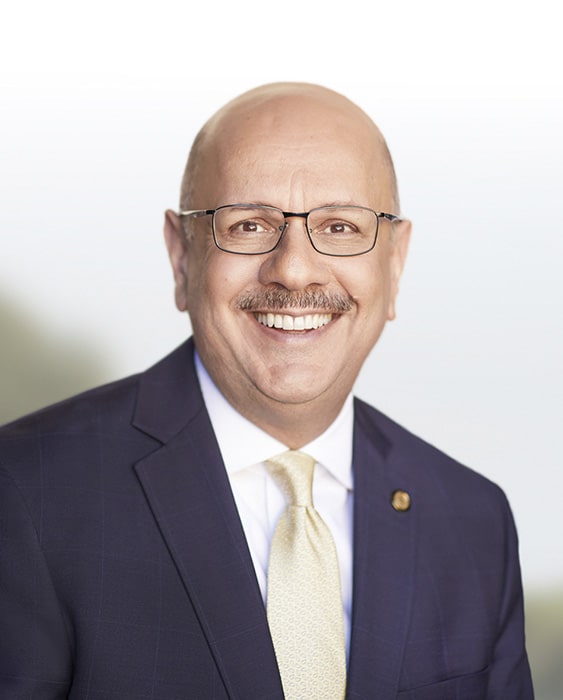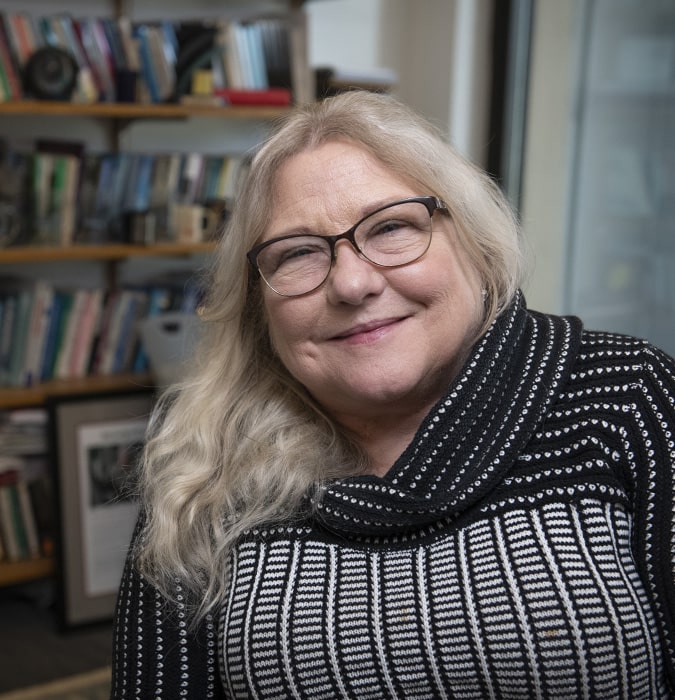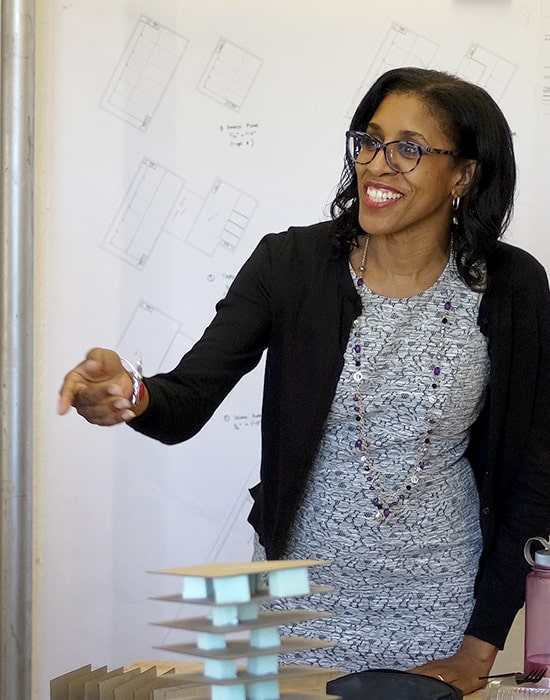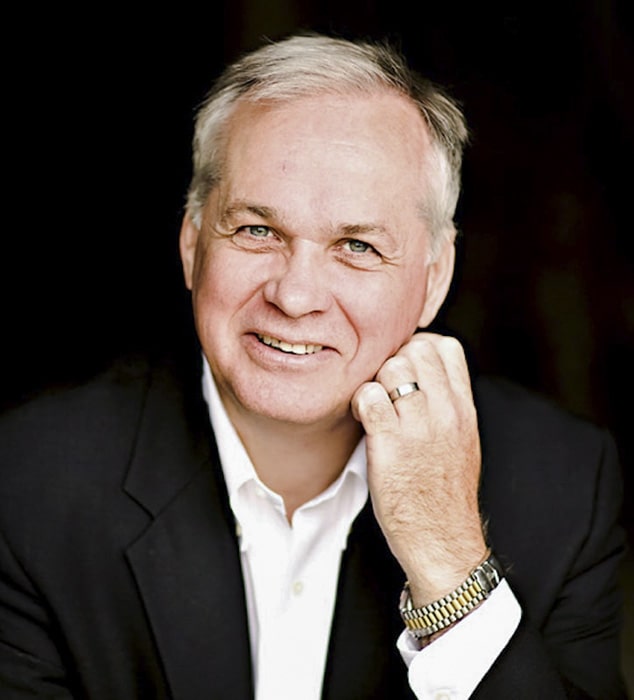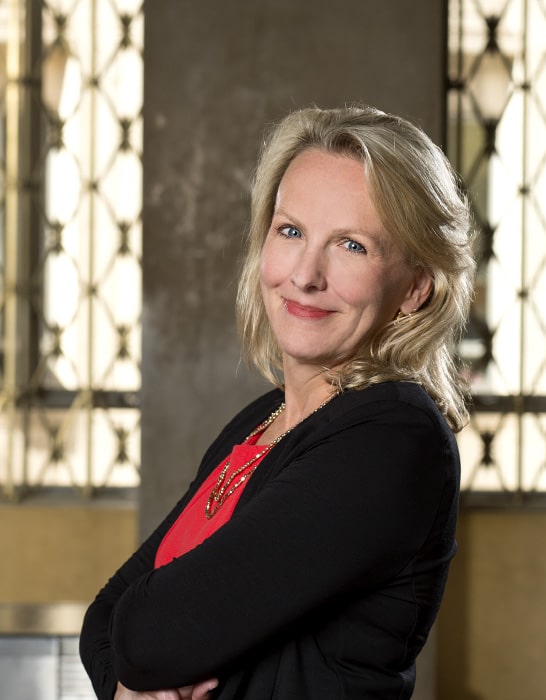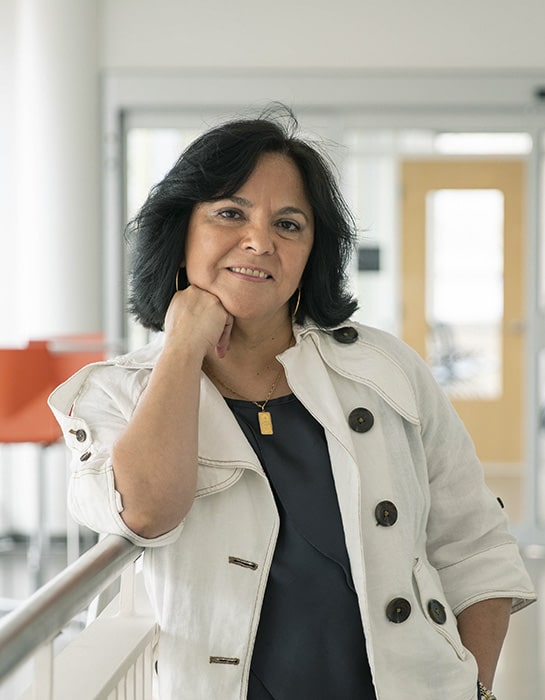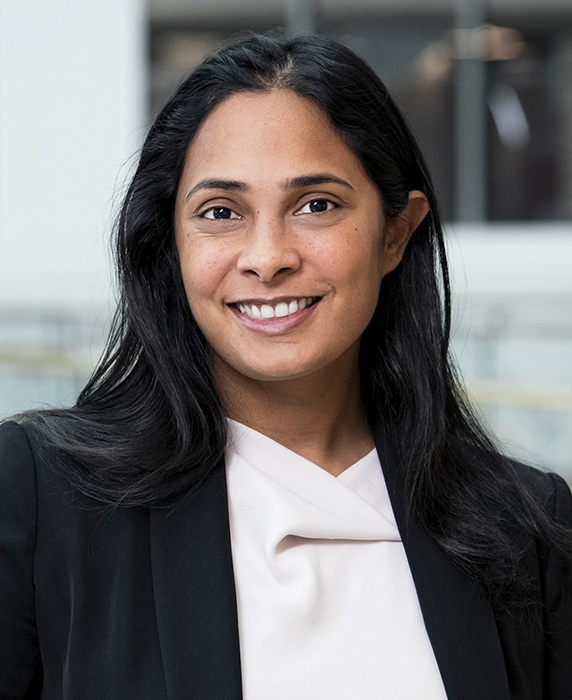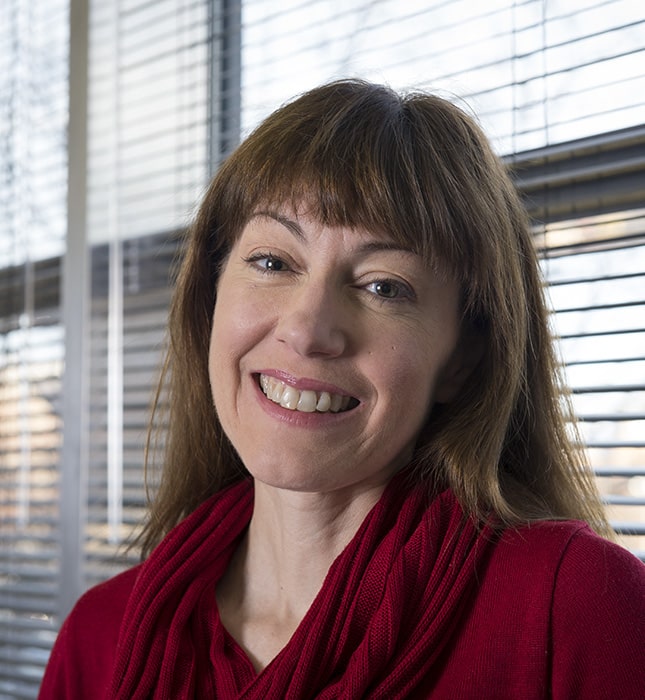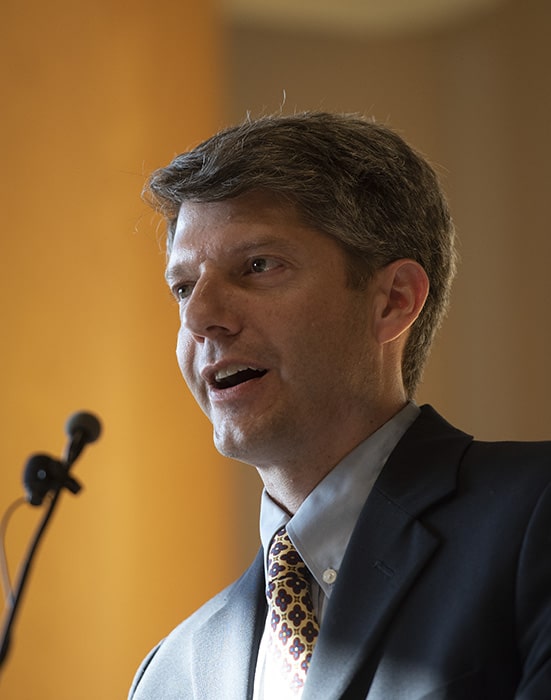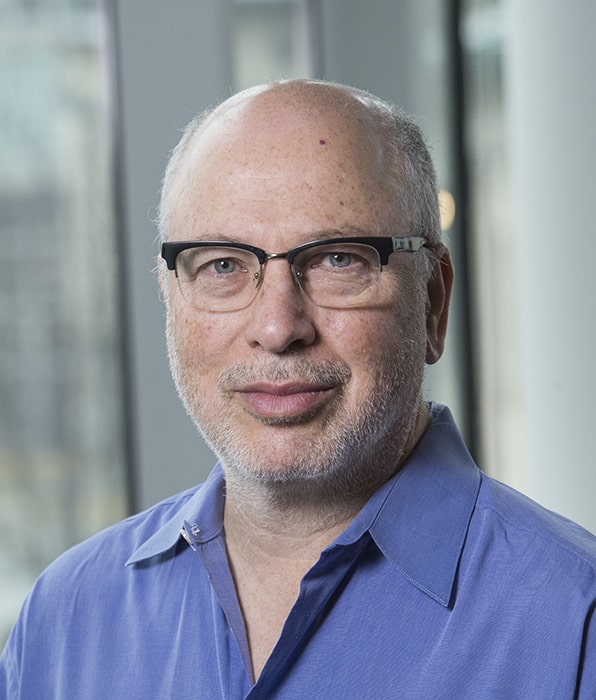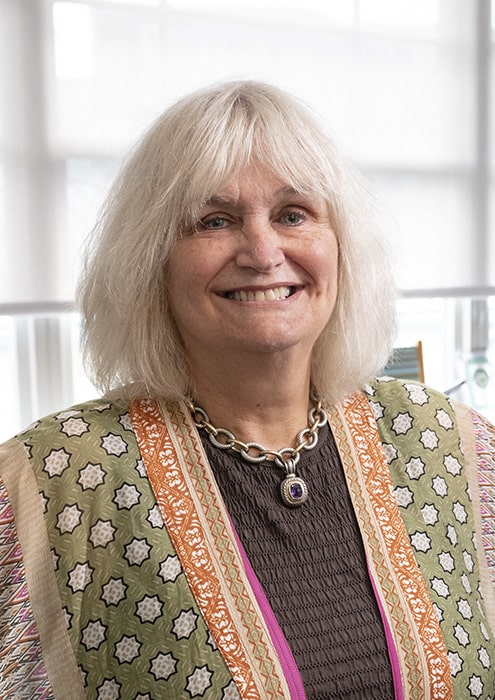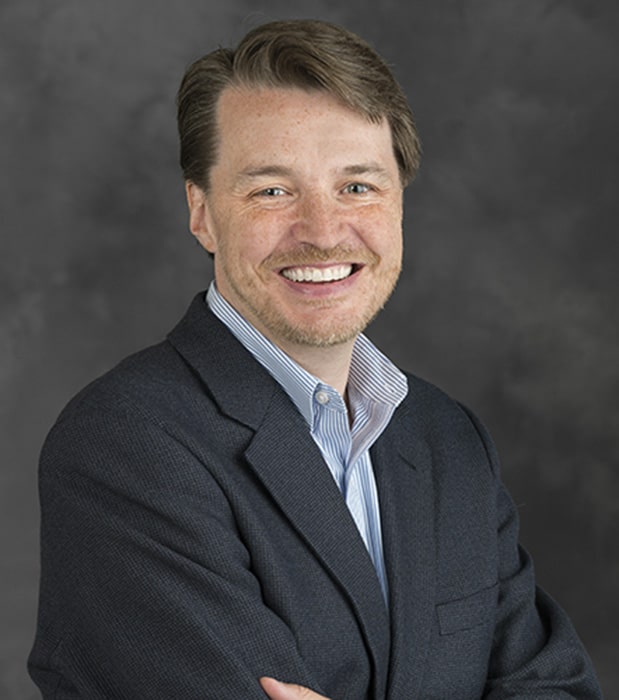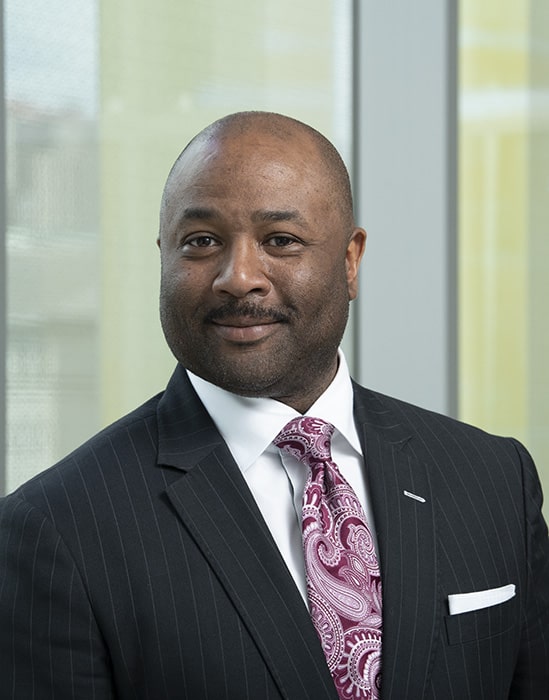Anticipate the Turn
After more than a year of COVID-19, CMU experts reflect on a changed world
Thrust into the middle of the coronavirus pandemic, the thinkers and doers at Carnegie Mellon University push on. Researchers tackle new problems as lecturers innovate unexpected ways to connect with the bright minds of tomorrow.
The late Randy Pausch, a CMU alumnus and professor, spoke about dealing with the unexpected: "We cannot change the cards we get dealt. Just how we play the hand."
Pausch said this while delivering "The Last Lecture" in 2007 after being diagnosed with pancreatic cancer. His moving message of how to live a fulfilling life of purpose aligns with the core values the Tartan community practices to this day.
COVID-19 is the hand on the table, and the best players have a plan for when the next card is turned. The coronavirus shook the world, accelerating changes in education and technology, disrupting models in business and entertainment and fundamentally redefining how work gets done.
Looking forward, CMU experts share their thoughts on the best applications for advancements made in the past year, preparations for a post-pandemic landscape and how lessons learned can inform the future.
— The Rapid Pace of Change —
As advances in technology and unprecedented access to data are transforming our economy, culture and society, there is increasing anxiety about how the world can keep up with this rapid pace of change. In particular, economists and policymakers across public and private sectors have been contemplating how our economy and the global workforce will be impacted by automation and digital transformation.
The question is, "What is the future of work in the age of rapid technological change?" The impact of the COVID-19 pandemic on the global economy has made this question even more unsettling and the need for answers even more urgent.
Likewise, the pandemic has had a transformative effect on higher education, accelerating trends and challenges we already knew were reshaping our industry. For example, concerns surrounding access and affordability have become even more pronounced; without aggressive financial aid approaches, the adverse economic impact of COVID-19 will only exacerbate socioeconomic barriers for students. On a more optimistic note, the pandemic has highlighted the importance of research and innovation in tackling society's most significant challenges. I am also struck by the pandemic's effects on the student experience inside and outside the classroom, and in particular its impact on well-being and overall wellness. While it underscored the value of an immersive, residential college experience, especially in building connections and community, COVID-19 also proved that education can be much more personalized, flexible and technology-driven than many had realized. Furthermore, previous conventional wisdom held that technology was simply an educational tool, but we see now that technology can be a key driver of pedagogy and that the melding of virtual and in-person interactions can lead to measurable improved learning outcomes.
As we reflect on the past year, it is clear that this has turned out to be one of the greatest experiments in the history of higher education, conducted at a moment when our capacity to study and record our outcomes has never been greater. And even though we were thrown into crisis over the past year, the Carnegie Mellon community went into it knowing it would be a seismic event and we made every decision over the past 12 months with these realities in the foreground. Now, as we begin to emerge from this pandemic, we are even more focused on leveraging what we have learned to carve out a deliberate path for Carnegie Mellon in the post-COVID era. We recognize an opportunity to help our community members — and indeed the world — use these recent experiences to build a more empowered, adaptable and forward-looking model that meets the needs of our students. This is indeed a pivotal moment for higher education, and I believe Carnegie Mellon is well-positioned to lead into the future.
— Widespread Disinformation —
COVID-19 has brought recognition to the fact that disinformation is not the problem of just one country. During the pandemic, there has been more disinformation — many more different storylines — than we've seen in any one event in the past. So, there's an order of magnitude. Further, it appears not just on one social media platform — but on many if not all social media sites.
There's also the question of how disinformation is being used. Disinformation conveying that COVID-19 came from Chinese food and Chinese people spread it led to actual physical violence against U.S. citizens of Asian descent.
Disinformation has been used by groups to politically position themselves. Certain disinformation is supported by China and Russia. It's become part of international politics, used to downplay a rival nation like the United States, to curry favor with their own constituents, to spread fear and to create civil unrest. It's also used to foster hate and build online hate groups. Extremists use disinformation to recruit new members and encourage protest. Disinformation has been used to politicize everything from vaccines to what is bought in a grocery store. It has been used to increase the partisan divide, making everything from wearing a facemask to going out to dinner a political partisan act.
I don't think the volume of disinformation alone has led to the recent efforts of social media companies to confront the issue. When the disinformation started leading to violence — like posts convincing people to drink bleach as a cure for COVID-19 — social media started to ramp up efforts to address the problem. When disinformation was used to foster hate groups, social media began to respond.
Attempts at banning actors or moderating content have often backfired. A real solution will need to be comprehensive. I like ideas like tagging every piece of information distributed through social media with its original creator and date, and whether or not it's been tampered with. Getting rid of "likes" altogether and limiting followers to actual humans you know could go a long way toward stemming the flow of disinformation.
We're going to need new laws and policy that actually have teeth, so that people disseminating dangerous misinformation can be prosecuted. We're going to need to educate people and organizations in how to maintain their social cybersecurity, to think critically about information, and to calm down in the face of propaganda meant to incite. Finally, we will need buy-in from across the globe, because this is not just an American problem.
— Equitable Design —
The pandemic has increased awareness of the importance of the environmental quality and energy efficiency of buildings for occupants.
The virus is hitting different populations, especially low-income, Black and Hispanic people, in greater proportions. It's brought awareness to things I've been saying for years: We need to have a more equitable culture and more ubiquitous implementation of sustainable design practices.
Your health is intertwined with your environment. People working, living and going to school in places with horrible indoor environmental quality are going to develop more adverse health conditions that make them more susceptible to death by a virus.
Take air quality — we're all aware of the importance of air circulation in curbing the spread of COVID-19. New energy efficient systems with properly working fans and filters that are regularly changed definitely improve air quality. However, in my research, I found that the air circulation rate in schools is poor in low-income or high-minority population schools as they don't have the money for the newest systems and are not regularly changing the filters. This leads to their carbon dioxide levels becoming really high. The pandemic has people paying attention to these levels because they let you know if you're breathing in old, recirculated air.
It may sound simple, but a design feature like operable windows can help significantly with air quality. There's been this false promotion by some architects and engineers to have sealed buildings where the windows just don't open. It's not right that I can measure air quality in a school classroom that is 400% over where it should be. It's shown that when there's a window in the classroom with access to daylight, test scores go up. But it's still not a requirement that classrooms have a window. We can do better.
Striving toward equitable environments is everyone's responsibility. It's my responsibility, as I teach architecture and design. I tell my students about the human side of having more solar panels, more daylighting and better air to breathe. It's Carnegie Mellon's responsibility to keep fostering these kinds of research and sharing it with the people of Pittsburgh, America and the rest of the world. It's the government's responsibility to have better regulations in place.
Finally, our community leaders and nongovernmental organizations must educate the public about climate change, the environment, and how we can operate and maintain our buildings better.
— Return of the Audience —
Right now, we're running a music school when musicians can't do the thing they need most — play music together.
One of the biggest challenges of remote learning on music educators is latency, the delay in transferring data over the internet. It would revolutionize music education (and music making) to be able to have a virtual experience without latency. We could conduct studio lessons in real-time and more importantly, rehearse and perform together remotely. Beyond the latency problem, if remote studio lessons could be made as robust and rich as those in-person, then theoretically students could study with amazing teachers from across the planet. You could take your weekly flute lesson in Pittsburgh from an instructor living in Berlin.
I wish the pandemic had never occurred for 10,000 reasons, but if there's a silver lining, it's that out of necessity Carnegie Mellon had to deliver a high-quality musical education and find ways to make musical art, and show students how to do it, too. Our musical community comprises very creative and resilient people, and they have found extraordinary ways to keep moving forward through uncertain times.
Artists don't create art for others. They create art because they have no choice — it's who they are. Something innate drives them. Performing artists are unique in that there is a payoff — the communication with the audience. Whether that audience is online or sitting across the footlights from you, or even listening to your recording, that communication still occurs.
Among the questions I find interesting: Will audiences return for live performances once the pandemic is in our rearview mirror? There may well be a pent-up demand for traditional concerts once it's perceived as safe to return. Conversely, we've all spent the last year seeking art and entertainment online and in the comfort of our own homes. Those content delivery/consumption avenues, and habits, aren't going away.
I have argued that if virtual reality develops to the point where it could present something like an orchestra concert in a meaningful, robust way, even if it's a new way, it could revolutionize the orchestra industry, and opera as well. I believe a large number of people would embrace the prospect of a quality musical experience when and how they want to experience it, without the hassle of going in-person to a theater. It's coming — I hope soon.
— Automated Science —
During the first three months of the pandemic many things were uncertain. In order to make sure that we were keeping our community safe, we had to pause the university's research mission while we determined the best way to protect everyone from contracting and spreading COVID-19. During this time, most of our scientists and students weren't able to get into their labs, setting back their work by months. Students didn't have access to laboratory classes that are essential to their education. This situation wasn't unique to Carnegie Mellon; it was the same at universities worldwide. COVID-19 has made it abundantly clear that we need to rethink how we do laboratory research and education, so we don't find ourselves in a similar situation in the future.
Since I came to Carnegie Mellon five years ago, we have been thinking about what the future of science looks like, and that future includes centralized, automated laboratories. Remote-controlled, AI-driven labs — called cloud labs — allow researchers to design experiments from anywhere. They submit their code to the cloud lab facility where the experiment is performed mostly by robots. The cloud lab collects the data and returns it to the researcher. Access to such a lab would have dramatically minimized the impact of last year's pause in research.
CMU and the Mellon College of Science have been partnering with one of the leading commercial cloud labs, the alumni-founded Emerald Cloud Lab (ECL), to bring cloud lab technology to the university. Through this partnership we were able to bring a laboratory experience to students through a cloud lab class. A number of our scientists were able to continue their research using the ECL technology and facilities.
I believe that an academic cloud lab is the way of the future, and the pandemic reinforced this. We're working hard to create the world's first Academic Cloud Lab at Carnegie Mellon. Having such a flexible and accessible laboratory setup will democratize science at the university and provide an essential learning experience for the next generation of scientists. With a cloud lab the only limitation to scientific progress will be the extent of human ingenuity. Carnegie Mellon, with its strengths in automation, robotics, AI, computing and foundational science, is one of only a few universities in the world that is capable of transforming science in this way.
— Dynamic Decision Making —
My research has taught me that there are at least three essential elements that help people adapt to dynamic and evolving environments successfully:
- To acquire a high diversity of experiences;
- To act under uncertainty by applying all similar past experiences to the current context;
- And to account for the feedback the environment can provide and learn to update past experiences accordingly.
A high diversity of experiences is created when we work in larger interdisciplinary teams. Thus, I see an increasing need for creating interdisciplinary research projects with people that can work together in solving global societal problems. Also, the need for computational approaches to study human DDM is increasing exponentially. We need computational representations of the human decision processes that help in connecting with many other communities, demonstrate the usefulness of such models to predict decisions under uncertainty, and generate ideas on how we can help humans learn from the feedback in dynamic environments. COVID-19 is an example of how global societal problems cannot be solved by individuals working in their own fields; a large-scale of interdisciplinary collaborations in which research on human decision making and the computational representations of such processes is needed.
To look at the similarity across DDM contexts is important to solve novel societal issues. For example, from the DDM perspective, the issues raised by the pandemic are very similar to those involved in other dynamic problems in our society, such as climate change. How humans make decisions with carbon emissions can seem very distant, but climate change and COVID-19 are both dynamic situations evolving over time with feedback delays. That means one cannot immediately observe the results of our decisions, which makes learning very challenging.
In the case of global warming, it is hard to see the effects on carbon reduction of taking a bike instead of driving a car, or flying to fewer conferences, given the significant feedback delays. But those decisions have real aggregate global impacts. In the case of COVID-19, feedback delays might be shorter, and the impact of wearing a mask in public may show a more immediate effect on the spread of coronavirus.
It is clear from the COVID-19 situation that in the future, humans will require more of these DDM abilities.
— Debt Burdens and Infection —
One of my primary areas of focus is how the housing market interacts with various economic crises. Most recently I've been researching how mortgage debt burdens make households vulnerable to infections during the pandemic.
Inequality has been exacerbated by COVID-19. My co-author, Tetiana Davydiuk, and I have researched how mortgage debt burdens affected mobility patterns (the distance one travels from home each day) before and after the start of the pandemic.
The mobility of higher-income households dropped significantly more than the mobility of lower-income households after March 15, when the pandemic started to pick up in the U.S. We provide evidence that mortgage debt burdens contribute to this inequality in households' ability to reduce mobility. This relation may be driven by the stress lower-income earners face of maintaining wages to meet their mortgage payments, thus forcing them to endure more potential exposure to coronavirus.
If a household is relatively constrained, a greater portion of their wages is going toward their mortgage payments, and the financial stress of an income shock can be devastating. Earners without such constraints are more effectively able to protect themselves from being infected with the virus.
Besides the differential stress of mortgage burdens on rich and poor households, the pandemic has also highlighted many other dimensions of inequality in society. For example, richer neighborhoods are getting vaccinated at higher rates even though poorer neighborhoods have experienced higher rates of infection.
Following the Great Depression, the U.S. made structural changes to the way it regulated banks, such as the introduction of deposit insurance, in an attempt to protect American citizens. Now, COVID-19 has brought many inequalities to light and has pushed policy makers to take action. By mailing out stimulus checks, a policy idea similar to universal basic income, the U.S. is undertaking relatively uncharacteristic welfare policies.
This past year has seen the implementation of programs trying to increase the safety net for average people. For now, they are short-term and temporary programs. But these issues of inequality have become so salient during the pandemic that we may see a stronger welfare state going forward, even after the pandemic. Perhaps we will see a move toward universal basic income or policies that guarantee federal jobs for any American.
— Enhanced Learning Outcomes —
In my field, we apply research from the learning sciences to enhance teaching and learning. The pandemic highlighted the innovation of our faculty members. They care deeply about the craft of teaching, and have been even more willing to collaborate, sharing ideas and strategies for the remote classroom. This exchange of ideas is incredibly valuable.
With the rapid shift to remote education, we reaffirmed the importance of focusing on the fundamentals of education, especially during a time where both students and faculty did not have any spare capacity.
The past year was a reminder that no matter what the classroom looks like, engagement, connection with students and active learning strategies are key to successful outcomes. By now we have about 50 years of research into these robust principles of learning. It's prudent to think about how those principles can best be applied to new technologies.
With new technologies, or tools, our first goal during the pandemic was to create consistency in how they were used. That regularity and familiarity was something that resonated with students and faculty who were dealing with already overwhelming circumstances. The teaching and learning experience can't be separated from that of the overall pandemic experience.
Looking beyond the pandemic, one thing that is a real opportunity — more faculty are now familiar with using educational technology tools from teaching remotely. In addition, the shift to more technology-mediated interaction means that there's the possibility for capturing data on how students are learning that wasn't possible before. We now have the opportunity to investigate how students are interacting with the material, the teacher and each other as they are learning. And in my work, partnering with CMU instructors, we want to leverage that data to understand how teaching materials and technology tools can improve these interactions and ultimately lead to enhanced learning outcomes.
— The Fault Lines of Society —
People can be reluctant to work on the foundations of homes because that work can be expensive and, unlike investing in a kitchen or a bathroom, the work is often invisible. But if you neglect the foundation, the rest of the structure can lose its integrity.
Public health is part of the foundation, and the home is our republic. Nobody expected that this particular virus would cause this particular pandemic. But many of us who work in this area have known that the U.S. has neglected public health foundations for far too long, and problems that are occurring are the avoidable consequences of that neglect. For me, the pandemic has been the realization of longstanding fears.
Epidemics reveal the fault lines in society, and COVID-19 is no exception. My hope is that we will pay careful attention to these fault lines and undertake the difficult work needed to shore up the foundations of our republic. I will mention three issues.
One is social trust. In a crisis, rumor flourishes and social divisions widen. Collective action in the U.S. is particularly difficult to muster because politics are so polarized. Important issues quickly become tainted by partisan positions that dumb down complexity and prevent cooperation. We saw this early on when hydroxychloroquine was touted as a safe and effective treatment for COVID-19 on the basis of thin and heavily biased information. We must do more to create a space in public culture where we can express uncertainty about important issues, identify and agree on evidence, and then make decisions on the basis of that evidence and shared values.
A related issue is combating misinformation. The speed with which safe and effective vaccines have been developed is amazing. But vaccines won't safeguard individual and public health if they aren't used. Rates of vaccine hesitancy are increasing because of fears about safety and efficacy that are often grounded in misinformation and conspiracy. Social media is like a broken downspout spilling water into the foundations of our house, with misinformation and conspiracy causing the erosion.
Finally, but perhaps most importantly, the pandemic has underscored how far we have to go in the struggle for civil rights and racial justice. Black and Hispanic patients are more likely to contract COVID-19, be hospitalized and die as a result. These differences reflect the legacy of exclusion that creates patterns of poverty and poor health, which are exploited by a novel contagion.
— The Human Aspect of Pandemics —
I am a computational epidemiologist. Over the past 10 years, one of my goals has been to educate people about the need for epidemic forecasting. What I managed to do in the first eight years of my research is dwarfed by what the pandemic did. All of a sudden, the whole world knows and understands the risks and concerns associated with a pandemic.
It was also an opportunity for me to learn as well. It showed how, in all of our work since 2012, we had missed a huge aspect of epidemics — the aspect of human behavior.
We've used the flu as our main test bed because there's detailed data going back 20 years. But people don't change their behavior much for the flu. They just live with it because it's more or less the same every year.
One of the main drivers with coronavirus is government action, and how people respond to those actions. It's much harder to predict human behavior than the behavior of a virus.
In February 2020, when it was apparent that the novel coronavirus was going to become unstoppable, we shifted our efforts immediately from flu to COVID. The flu season this year was significantly smaller, most likely due to social distancing and mitigation strategies aimed toward the pandemic.
Our strategy has been to focus on local developments and local behavior, because the situation varied so greatly from place to place. What was happening in Pittsburgh was different than Erie. We had to look at counties and metropolitan areas, rather than state by state.
We focused on forecasting in the very near term, three to four weeks maximum. We didn't think it was possible to say anything definitive about what would be happening more than four weeks ahead. That time frame is still very useful for making public health decisions.
Kentaro Toyama, a fellow computer scientist at the University of Michigan School of Information, said that technology is an amplifier of human intent and capability. We have great technology, but with COVID-19, we failed to organize and respond. You can look at this natural experiment of all the countries in the world, and how they dealt with it. That's not to say we could have been completely safe ourselves, but we could have done better.
We knew going in that this is a war, and we need to do everything we can to win. We're focused on building the technology and infrastructure to help track and forecast any pathogen and preparing for the next pandemic. We're here for the long term.
— Well-being and Work from Home —
The pandemic has shown how important human well-being is to organizational life.
I study the employment relationship — especially what we call the psychological contract, or how workers experience their relationship with an employer and what they believe each owes and are owed in return.
I do see some recognition of the duty of care on the part of today's employers, who are paying more attention to things like sick leave and the importance of workplace flexibility for parents. Organizations have an obligation to reach out to their employees in crisis situations, striving so no one is overlooked.
It's exciting how views have changed on work-from-home policies. One of the big objections to having employees work from home in the past has been that managers are uncomfortable managing people they can't see. On the whole, companies have learned through the pandemic that they can trust their workers to be productive from home.
While these new work environments offer some advantages, they also require new ways of thinking. For groups or teams starting from scratch in distributed environments, an initial level of trust doesn't exist. Studies have found that trust can form in these distributed groups, but it takes longer. So how do we develop practices to onboard people who haven't ever been face-to-face? Building in opportunities for meet and greets, idea-sharing, and all hands Q&A with the boss can make a difference.
I think the most amazing thing I didn't foresee was, in truth, the effect on the planet of large numbers of the U.S. workforce staying home. Even though it was a radical shift, we successfully shut down a lot of carbon-emitting activity, some of which proves quite unnecessary — like driving into work. Knowing that it's doable to rapidly shift our carbon footprint is an important recognition.
— A Golden Age of Content —
For a long time, the entertainment industry was very stable, until new technology came in — disrupting their practices and bringing new competition. Big studios, record labels and publishers initially opposed technological change, correctly perceiving that new technologies posed a huge threat to their business. What they missed, however, was that these changes represented a way to enhance the underlying mission of entertainment. By democratizing access to the tools to create and distribute, and by giving consumers access to new tools to consume, we've seen an explosion of creativity that some have called a new golden age of entertainment.
And now some of the major companies that initially saw technological change as a threat are making massive changes to their business model and organizational structure to embrace the opportunities new technologies provide.
I see parallels between the entertainment industry and higher education. A lot of universities today look like entertainment companies in 2015. We are opposed to technological change because of the threat it poses to our established practices, without recognizing the opportunities it can create for our underlying educational mission.
University residential education is great for people who have the opportunity, and financial resources, to access physical campuses. But not everyone is so fortunate. Today, we can do better by using technology to make some of our scarce educational resources abundantly available in the same way technology has democratized access to content creation, distribution and consumption in entertainment. Netflix uses data to treat customers as individuals and personalize the experience for each viewer. Spotify has radically reduced the cost of experiencing music from $15-20 for a single CD to $10 per month for access to every album ever produced. What if we applied the same concepts to education — using technology to radically lower the cost of gaining higher education credentials and radically personalizing the education experience to each student's needs?
We can, and indeed, we must. The number of intelligent kids left out of the system simply because they grew up in the wrong zip code is shameful. New pathways for university learning, like remote education which has leaped ahead during the pandemic, can help these disenfranchised learners. By investing in these tools we can create a new, and more inclusive, system of education. This system isn't for everyone, but it should be available to everyone.
— Remote Work: Here To Stay —
Remote work isn't just "nice to have." It's a business necessity at this point that certainly won't end once the virus is defeated. Corporations, companies and universities carry a significant overhead for space. Traditionally, we carried that overhead because we thought workers needed to be in the same location to be effective. It's time we disabuse ourselves of that notion.
Remote work will permanently change society. In turn, it's going to change where we live. If you can work anywhere, why not live somewhere with a lower cost of living or closer to family?
A hybrid work paradigm, where some workers are remote and others are in the office, will call into question the notion of presence. Things like augmented reality (AR) or virtual reality (VR) could start to deliver in that realm. Imagine putting on a pair of comfortable AR glasses and having the sensation that you're in the office and your co-workers are right beside you.
High-speed connectivity will become increasingly more important as work-from-home options expand. Some areas don't have the infrastructure for high-speed internet, while some people find that internet speeds that suited home needs aren't enough for job requirements. Employees will require an effective home setup, and even if high-speed connectivity isn't required, some employers may still expect it. It makes sense when a company is mandating higher speeds that they provide some kind of supplement to their workforce.
COVID-19 also highlighted the importance of making data-based decisions. At Carnegie Mellon, prior to the virus, we started an integration project to tie systems together in a more effective manner, aiding in the creation of advanced reporting and analytics.
We've built a dashboard using this data for decision support, and the value is clear. Representing data in a visual format, we are able to break down campus population density by building to make sure we aren't exceeding social distancing norms or revised building occupancies. We're able to track how much equipment we have on hand for COVID-19 testing and sanitation efforts, and how many people we have available to do that work. Tying such things together like the brief Daily Self-Assessment questionnaires, campus decision makers can see results in a glance and approximate the level of infection in the CMU community. Maximizing data usage allows us to put our resources to their best use.
I'm a technology wonk, and I get goosebumps just thinking about this.

